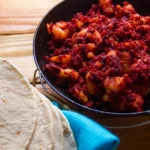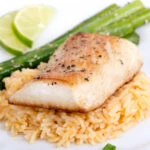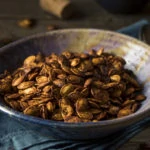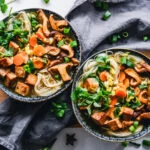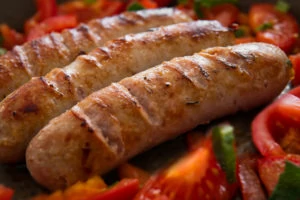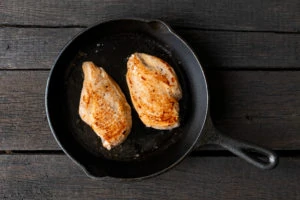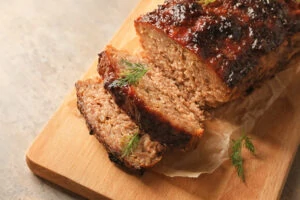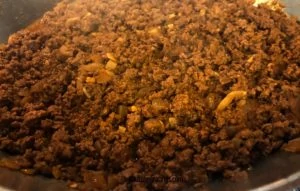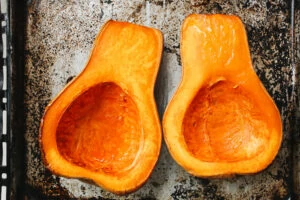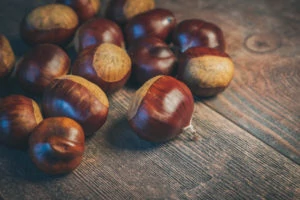How to sauté delightfully plump, juicy, and tender shrimp every time. Cooking shrimp is easier than you think and it’s a great way to add quick, tasty protein to your dinner any night of the week.
Make fast sautéed shrimp by defrosting one pound of large peeled and de-veined shrimp under cold running water, then dry them. Heat a layer of olive oil in a large skillet over medium heat. When hot, add the shrimp and sauté for 3 to 5 minutes, until the shrimp are pink and c-shaped. Immediately remove them from the heat and serve hot.
If you’re looking for a healthy, quick-cooking, filling, and delicious protein to add to your plate, you may not need to look any further than fresh shrimp. This low-calorie, high-protein crustacean is easy to find, freezes well, and cooks in under 10 minutes. Plus, there are dozens of flavorful ways to prepare shrimp to maximize their natural sweetness and crisp, snappy texture. From pasta to soup to tempura, shrimp is a favorite ingredient around the world.
This guide covers everything you need to know about buying, storing, and cooking shrimp at home. Plus, how to know if your shrimp is fully cooked and if you can store leftovers.
How to Buy the Best Shrimp
When it comes to buying shrimp, like all seafood, where it comes from matters. Shrimp are raised and harvested all over the world, from Thailand to Mexico. But not all shrimp are created equally. There are vast differences in the breeding and harvesting practices of shrimp farms around the world. While some shrimp farms use chemical fertilizers and pesticides to raise the most shrimp as quickly as possible, other shrimp is fed only organic food and given room to grow.
Farm-Raised vs. Wild-Caught
If you’ve stood in front of a seafood counter hungry for some shrimp cocktail, you’ve probably faced the question: what’s the difference between wild-caught and farm-raised shrimp? And which is the better option?
Farmed shrimp have been raised in man-made ponds. These shrimp are mostly flown into the US from large-scale farms in South Asia, China, and India. Often, these shrimp are treated with chemicals and antibiotics to beat back diseases. These chemicals can have negative impacts on the surrounding environment.
Wild-caught shrimp, on the other hand, are fished out of the ocean. While this is generally preferred to farm-raising, shrimp fishermen can often end up with more than just fish in their nets. This by-catch often contains other vulnerable species at risk of being overfished. Fortunately, efforts are always being made to reduce bycatch. Fishermen can use special technology to exclude other species, including sea turtles, from getting scooped up by ocean trawling nets.
The best way to ensure that your shrimp are raised sustainably without harmful chemicals is to look for the Monterey Bay Aquarium Seafood Watch “Best Choice” label. As a general rule of thumb, farmed shrimp from Argentina, China, Guyana, India, Indonesia, Malaysia, Nicaragua, and Vietnam are on the “Avoid” list. Many of the “Best Choice” shrimp varieties are grown in indoor recirculating tanks or caught in shrimp traps.
When it comes to flavor, most people prefer the taste of wild-caught shrimp to farmed. These shrimp tend to have a cleaner, bolder taste compared to the more mild, watered-down flavor of farmed shrimp.
Fresh vs. Frozen Shrimp
The next question is whether to buy fresh or frozen shrimp. The surprising truth is that even thawed shrimp at the fish counter were most likely previously frozen. Shrimp, like all seafood, have a short shelf-life. To maximize freshness, most fishermen flash-freeze their catch fresh out of the water, right on the boat. Then, the shrimp can be safely transported around the world. Often, the fresh shrimp for sale at the grocery store is actually just defrosted shrimp.
So the best bet for buying shrimp is always to opt for frozen. Unless you know the fisherman personally and can attest that the shrimp are fresh out of the water that day, you’re better off heading to the freezer aisle than ordering at the seafood counter.
What Size Shrimp is Best?
The best size shrimp will depend on how you plan to cook it and who you’re serving. Shrimp sizes range from colossal to tiny, but most recipes call for large or jumbo shrimp. These have a toothsome, meaty texture and are large enough to satisfy strong appetites. For stand-alone appetizers like shrimp cocktail or coconut shrimp, you may want to err on the side of larger. On the other hand, for dishes that include other ingredients like soups and stir-fries, you can go with smaller shrimp.
Peeled or Head and Tail on?
The final question to confront is all about heads and tails: on or off? P&D is the culinary term for “peeled and deveined.” This means your shrimp have been shelled and the vein and head have been removed. This is generally the easiest presentation for eating shrimp. However, the shell, head, and tail actually preserve a lot of flavor in your shrimp. It adds some extra work to your dish, of course, so for this simple shrimp recipe, we’ll use peeled and deveined shrimp.
How to Sauté Shrimp
Now that you’ve selected the best frozen shrimp you can find, let’s get to the recipe and how to cook shrimp to perfection.
Ingredients for Sautéed Shrimp
This simple way to cook shrimp lets the seafood shine. So you’ll only need three basic ingredients to get the job done:
- 1 pound of frozen, raw peeled, and deveined large or jumbo shrimp (this makes enough to feed four people)
- Olive oil
- Salt and pepper
Prepping Shrimp for Sautéing
Step 1: Thaw
If you bought frozen shrimp, the very first thing you need to do is thaw it. If you have time, the best way to thaw shrimp is in the refrigerator. You can place the whole bag of frozen shrimp in the fridge the night before you plan to cook it.
If you’re in a rush and forgot to thaw your seafood, however, no worries. Shrimp defrosts very quickly. Simply place your shrimp in a colander and run cold water over them. The continuous flow of water quickly thaws the shrimp. To ensure all of them thaw evenly, toss the shrimp in the colander every so often.
Step 2: Dry them off
Remove your shrimp from the pot and place them on a plate. Gently pat the shrimp dry with paper towels. Remember that these are delicate pieces of seafood, so use a light touch.
Start Cooking
Step 1: Prepare your pan
You’ll need a large skillet to sauté your shrimp. Cast-iron is a great choice, but non-stick will also work well. Heat the skillet over medium-high heat. When the pan is hot, add a drizzle of olive oil to coat the bottom of the pan. Warm the oil for a few seconds and tilt the skillet to spread it into an even layer.
Step 2: Sauté the shrimp
Once the oil is freely moving throughout the pan, the shrimp can go in. Start by adding one shrimp to ensure the oil is hot enough. The first shrimp should sizzle on contact with the pan. If it doesn’t let the oil warm for a bit longer.
Step 3: Add a little flavor
Season the sauteéd shrimp with salt and pepper when they’re in the skillet. If you like, you can add other dried seasonings or spices at this stage too.
Step 4: Move things around
Shrimp cook very quickly, so the best way to sauté shrimp is to keep them moving in the skillet. In fact, the word sauté means “to jump”. Use a spatula or just move the skillet back and forth over the heat to keep the shrimp jumping. You want each shrimp to cook for about 1-2 minutes per side, depending on the size of the shrimp. They’re done as soon as they curl into a tight “C” shape and are pink all the way through. This happens quickly, so keep a close eye on the shrimp as they’re cooking.
Step 5: Plate the shrimp
When the shrimp have just turned pink, immediately remove them from the heat. They can overcook and turn rubbery before you know it. So transfer the shrimp from the skillet to your serving plates and serve them up hot!
How to Know Sautéed Shrimp are Done Cooking
While overcooked shrimp can have an off-putting texture, undercooked shrimp can be a food safety hazard. The best way to visually tell that your shrimp are safe for eating, according to foodsafety.gov, is by color. White or opaque color is an indication that your shrimp are cooked. If you have an instant-read thermometer, you can know that your shrimp are fully cooked if they reach 145°F(or 65°C) internally.
Nutrition in Shrimp
Shrimp are a great source of lean protein. One 3-ounce serving of cooked shrimp contains 99 calories, less than 1 gram of fat, 0 grams of carbohydrates, and 24 grams of protein.
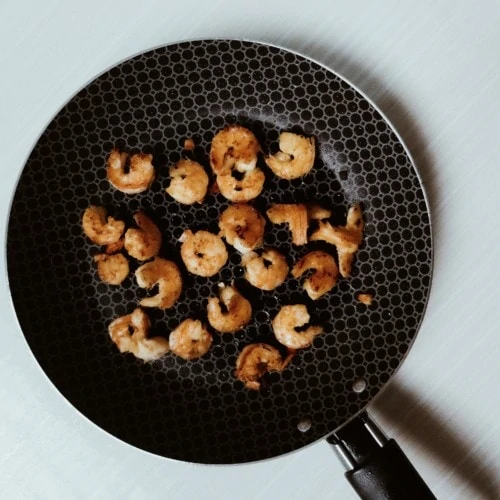
How to Cook Shrimp
Equipment
- Large skillet
- Colander
- Spatula
Ingredients
- 1 pound large shrimp peeled and deveined
- 2 tbsp olive oil
- Salt and pepper to taste
Instructions
- Thaw the shrimp by running them under cold water for about 10 minutes. Pat dry with paper towels.
- Heat a layer of olive oil in a large skillet over medium heat.
- When the oil is hot, add the shrimp, season with salt and pepper, and sauté for 3-5 minutes, until the shrimp are pink, c-shaped and register 145°F on an instant-read thermometer. Immedialty remoe from the heat and serve.

